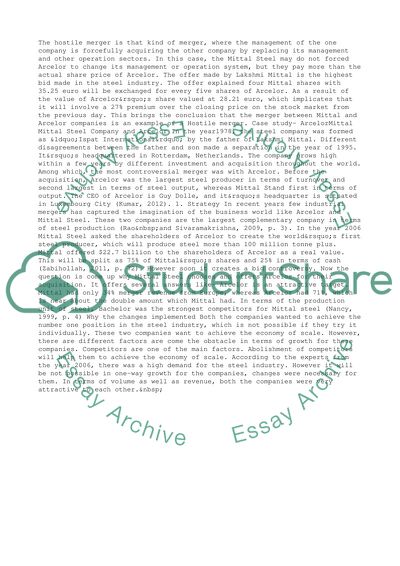Cite this document
(“Mergers and Acquisitions: Hostile Mergers (Case study ArcelorMittal ) Essay”, n.d.)
Retrieved from https://studentshare.org/business/1475093-mergers-and-acquisitions-hostile-mergers-case
Retrieved from https://studentshare.org/business/1475093-mergers-and-acquisitions-hostile-mergers-case
(Mergers and Acquisitions: Hostile Mergers (Case Study ArcelorMittal ) Essay)
https://studentshare.org/business/1475093-mergers-and-acquisitions-hostile-mergers-case.
https://studentshare.org/business/1475093-mergers-and-acquisitions-hostile-mergers-case.
“Mergers and Acquisitions: Hostile Mergers (Case Study ArcelorMittal ) Essay”, n.d. https://studentshare.org/business/1475093-mergers-and-acquisitions-hostile-mergers-case.


